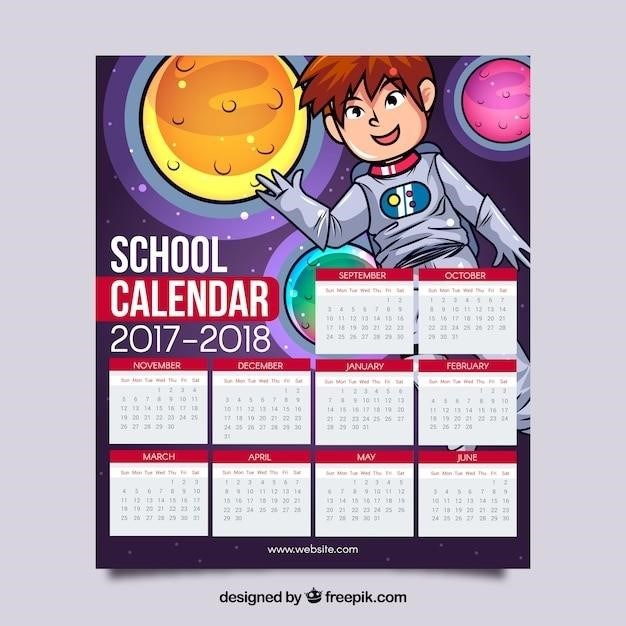Google Dorks⁚ Filetype⁚pdf
The “filetype⁚pdf” Google Dork operator is a powerful tool for finding valuable information hidden within PDF documents. When you append “filetype⁚pdf” to a search term, Google will only return results that are PDF files. This allows you to target specific documents and filter out irrelevant web pages, potentially uncovering valuable content that would otherwise be difficult to locate.
What are Google Dorks?
Google Dorks are advanced search techniques that leverage specialized operators to pinpoint specific, often hidden, information online. Imagine the ability to unearth sensitive or private information on websites that most people can’t access. Google Dorks provide a unique path to accessing detailed information that might otherwise remain concealed.
These powerful search queries, crafted using a combination of advanced search operators, allow you to refine your Google searches with precision. By employing these dorks, you can focus on specific search results, unveiling hidden gems that standard searches might miss.

Think of Google Dorks as a secret code for accessing information. They are not just simple keywords; they are a combination of commands and operators that can be used to find specific types of information. For example, you could use a Google Dork to find all the PDF files on a website that contain a specific keyword.
Google Dorks are a valuable tool for researchers, journalists, and security professionals. They can be used to find information that is not readily available on the surface web. However, it is important to use Google Dorks responsibly and ethically. It is also important to be aware of the potential legal implications of using Google Dorks to access information that is not publicly available.
How Google Dorks Work
Google Dorks operate by leveraging Google’s powerful search engine capabilities to refine and target your searches with precision. They utilize a combination of specialized operators and syntax, allowing you to filter and pinpoint specific information within a vast sea of data.
These operators, often referred to as “dorks,” act as commands that tell Google exactly what you’re looking for. For example, the “filetype⁚pdf” operator instructs Google to only return results that are PDF files. You can combine this operator with keywords to further refine your search, such as “filetype⁚pdf marketing strategy” to find PDF documents specifically related to marketing strategies.
The power of Google Dorks lies in their ability to reveal information that might not be readily accessible through standard search queries. They can help you find hidden files, databases, or confidential information that might have been unintentionally exposed online.
By understanding how Google Dorks function and mastering the various operators and syntax, you can unlock a treasure trove of hidden information. Whether you’re a researcher, journalist, or security professional, mastering this technique can significantly enhance your information gathering capabilities.
The Power of “filetype⁚pdf”
The “filetype⁚pdf” Google Dork operator is a game-changer for those seeking specific information within PDF files. This operator allows you to bypass the limitations of standard search queries that often return a mix of irrelevant results.
Imagine searching for a specific technical document, a research paper, or a company’s financial report. Using “filetype⁚pdf” will ensure that only PDF documents related to your search term are returned, dramatically reducing the noise and increasing the chances of finding the exact information you need.
This operator is particularly valuable for uncovering information that might be hidden within PDF files. It can help you find documents that might not be easily accessible through a website’s search function or that have been inadvertently left public.
Whether you’re a researcher looking for specific academic papers, a journalist investigating a company’s internal documents, or a security professional seeking potential vulnerabilities, “filetype⁚pdf” is an indispensable tool for finding valuable information that might otherwise remain hidden.
Finding Valuable Information
The “filetype⁚pdf” Google Dork operator unlocks a wealth of valuable information often hidden within the vast digital landscape. By focusing on PDF documents, you can bypass the noise of general web searches and target specific content. This is especially useful for uncovering information that may be hidden within a website’s structure or inaccessible through standard search functions.
Imagine trying to find a technical manual for a specific piece of equipment, a research paper on a niche topic, or a company’s confidential financial report. Using “filetype⁚pdf” in your search query allows you to zero in on PDF documents that contain this specific information. You can even pinpoint documents related to a specific company or individual by incorporating their name or website into your search.
Furthermore, this operator can be particularly useful for researchers, journalists, and security professionals. Researchers can find academic papers, journalists can uncover hidden company documents, and security professionals can identify potential vulnerabilities within systems. The possibilities are vast, offering a unique window into the world of hidden information.
Ethical Considerations
While “filetype⁚pdf” Google Dorks can be powerful tools for finding valuable information, it’s crucial to consider the ethical implications of their use. The ability to uncover hidden documents, potentially containing sensitive or confidential data, raises serious concerns about privacy and security.
It’s vital to remember that not all information found online is intended for public consumption. Accessing and disseminating sensitive information without permission can have severe consequences, including legal repercussions and damage to reputations.
Before using “filetype⁚pdf” Google Dorks, it’s essential to ensure that you have the necessary permissions and are operating within legal boundaries. Respecting individuals’ privacy and the confidentiality of sensitive information should always be a top priority. Responsible use of these tools involves exercising caution, considering the potential impact of your actions, and adhering to ethical guidelines.
Examples of Google Dorks
To illustrate the power of “filetype⁚pdf” Google Dorks, consider these examples⁚
“filetype⁚pdf intitle⁚ ‘Annual Report’ inurl⁚company.com”⁚ This Dork targets PDF files containing the term “Annual Report” within the title and located on the website of a specific company, such as “company.com”. This search can reveal valuable financial and operational insights.
“filetype⁚pdf intext⁚ ‘Confidential’ site⁚example.edu”⁚ This Dork searches for PDF files containing the word “Confidential” within the text and hosted on the website of a university, such as “example.edu”. This could potentially uncover sensitive documents that were accidentally made public.
“filetype⁚pdf intitle⁚ ‘Technical Specifications’ inurl⁚product-name.com”⁚ This Dork targets PDF files that contain the term “Technical Specifications” within the title and are located on the website of a specific product, such as “product-name.com”. This could help you find detailed information about the product’s features and capabilities.

These examples demonstrate how “filetype⁚pdf” Google Dorks can be used to discover specific documents, often revealing information that is not readily available through traditional search methods. Remember to use these Dorks responsibly and ethically.
Using Google Dorks for Research
Google Dorks, particularly those using “filetype⁚pdf”, can be invaluable tools for research, particularly in fields like academia, journalism, and investigative work. Here are some ways to effectively leverage them⁚
Academic Research⁚ Finding specific research papers, conference proceedings, or technical reports in PDF format can be significantly easier with targeted Dorks. You can search for keywords related to your research area, author names, or specific journals or conferences.
Journalism and Investigative Reporting⁚ Dorks can help uncover documents relevant to investigations, such as leaked reports, internal memos, or financial statements. This can be particularly useful for uncovering wrongdoing or shedding light on sensitive topics.
Historical Research⁚ Finding digitized historical documents, such as government reports, legal records, or personal diaries, can be a challenging task. “Filetype⁚pdf” Dorks can be used to target specific historical archives or repositories, potentially leading to valuable primary sources.
Product Analysis⁚ Understanding how a product works can be facilitated by finding its technical specifications, user manuals, or white papers. These documents are often available as PDFs and can be easily located with targeted Dorks.
Remember that while Google Dorks can be a valuable tool for research, it’s essential to exercise caution. Always verify the authenticity and reliability of any documents you find.
The “filetype⁚pdf” Google Dork operator is a powerful tool for uncovering valuable information that might otherwise remain hidden. It allows you to target specific types of documents, significantly refining your search results and potentially revealing hidden gems. Whether you’re a researcher, journalist, or simply curious about a specific topic, mastering the “filetype⁚pdf” Dork can unlock a wealth of knowledge.
While the potential benefits are significant, remember to use this tool responsibly. Always respect the privacy and security of others, and avoid accessing information that you are not authorized to view. Always verify the authenticity and reliability of any documents you find using Google Dorks.
Ultimately, “filetype⁚pdf” Dorks offer a unique way to explore the vast landscape of online information, providing access to valuable resources that might otherwise be difficult to locate. By understanding the power of this operator and utilizing it responsibly, you can unlock a world of knowledge and information.





























